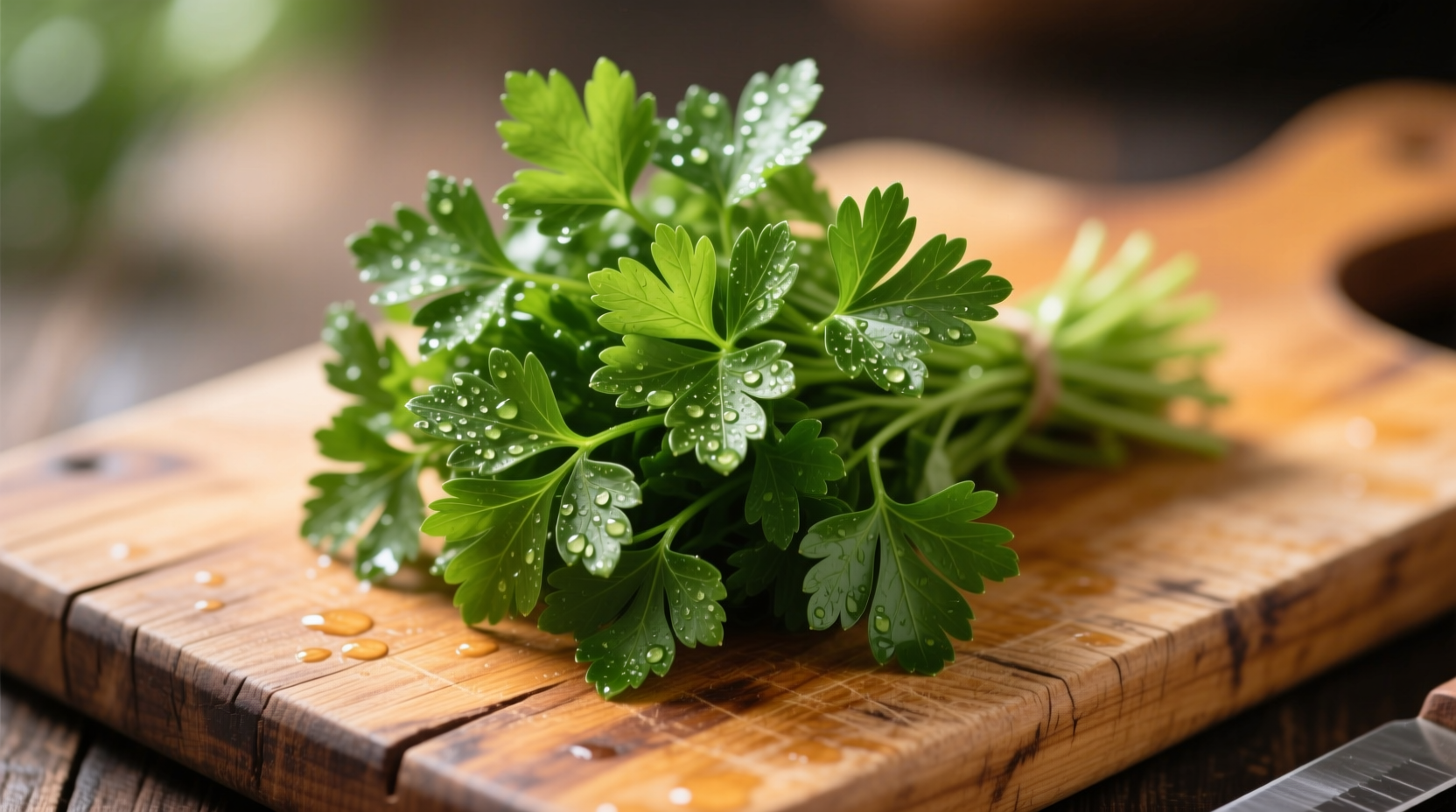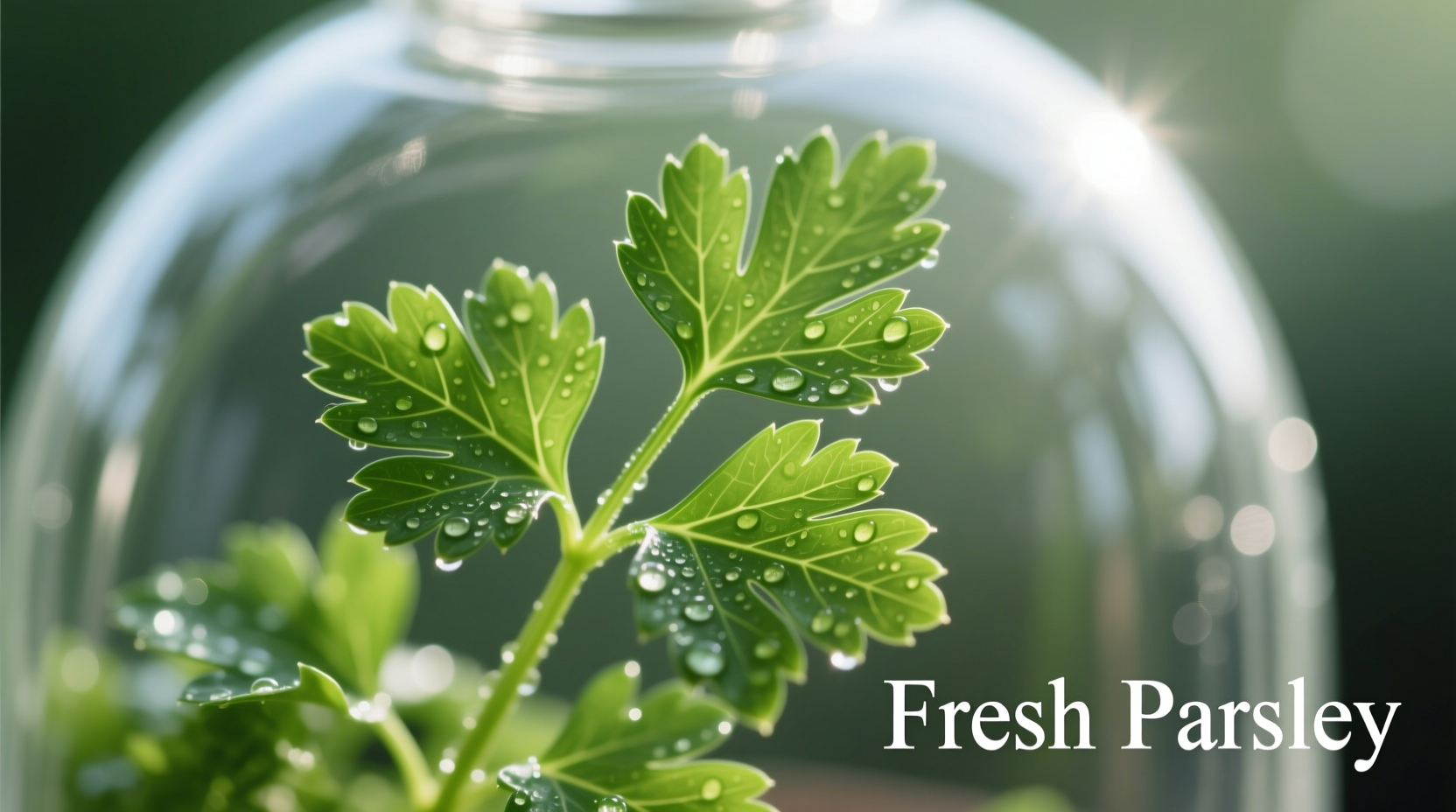Selecting the Freshest Parsley at Market
Choosing quality parsley starts with visual inspection. Look for vibrant green leaves without yellowing or wilting. Curly parsley should have tightly curled leaves, while flat-leaf (Italian) parsley displays deep green, smooth leaves with crisp stems. The best bunches feel heavy for their size, indicating high water content and freshness.
Seasonality matters: peak parsley season runs from late spring through early fall, when flavor intensity and nutritional value reach their highest levels. During off-season months, you'll typically find parsley grown in controlled environments with slightly milder flavor profiles.
| Parsley Type | Best For | Flavor Intensity | Storage Duration |
|---|---|---|---|
| Flat-leaf (Italian) | Cooking, sauces, pesto | Strong, robust | 10-14 days |
| Curly parsley | Garnishing, salads | Milder, more delicate | 7-10 days |
Professional Storage Techniques for Maximum Freshness
Extend your parsley's shelf life with chef-approved storage methods. The USDA recommends treating fresh herbs like cut flowers for optimal preservation. Trim 1/2 inch from the bottom of stems, place in a glass with 1-2 inches of water, cover loosely with a plastic bag, and refrigerate. Change water every two days to prevent bacterial growth.
For longer storage (up to three weeks), wrap parsley in a slightly damp paper towel before placing in an airtight container. This method maintains humidity while preventing excess moisture that causes spoilage. Never wash parsley before storage—moisture accelerates deterioration. Wait to wash until immediately before use.

Preparation Methods That Preserve Flavor
How you prepare parsley significantly impacts its flavor contribution. For maximum aroma release, chop parsley just before adding to dishes—enzymatic browning begins within 15 minutes of cutting, diminishing fresh flavor. Use a sharp chef's knife rather than a food processor, which can bruise leaves and create bitter notes.
When substituting for dried parsley, remember the 3:1 fresh-to-dried ratio. One tablespoon of fresh parsley equals one teaspoon of dried. Add fresh parsley at the end of cooking to preserve volatile flavor compounds that dissipate with prolonged heat exposure.
Culinary Applications and Flavor Pairings
Fresh parsley shines in specific culinary contexts where its bright flavor can stand out. It's essential in Middle Eastern tabbouleh, where it comprises 80% of the dish. In French cuisine, it forms the base of persillade (with garlic) and is fundamental to gremolata (with lemon zest and garlic) served with osso buco.
Professional chefs leverage parsley's versatility across applications:
- Sauces: Incorporate into chimichurri, salsa verde, and herb butter
- Proteins: Use as crust for fish or lamb with breadcrumbs and lemon zest
- Vegetables: Toss with roasted carrots or potatoes during final cooking minutes
- Grains: Mix into quinoa or couscous salads for freshness
Flat-leaf parsley works better in cooked applications due to its stronger flavor, while curly parsley provides visual appeal as a finishing garnish. Pair parsley with acidic ingredients like lemon juice or vinegar to enhance its natural brightness.
Nutritional Benefits Backed by Research
Beyond flavor, fresh parsley delivers impressive nutritional value. According to USDA FoodData Central, one-quarter cup of fresh parsley provides 233% of your daily vitamin K requirement, 15% of vitamin C, and significant amounts of vitamin A and folate. These nutrients support bone health, immune function, and antioxidant protection.
Research published in the Journal of Agricultural and Food Chemistry confirms that fresh parsley contains higher concentrations of apiol and myristicin—beneficial phytochemicals with antioxidant properties—compared to dried parsley. These compounds degrade during the drying process, making fresh the superior choice for both flavor and nutrition.
Common Fresh Parsley Mistakes to Avoid
Even experienced cooks make these parsley errors:
- Adding too early in cooking: Heat diminishes fresh parsley's delicate flavor
- Using stems indiscriminately: Thick lower stems are woody and bitter; only tender upper stems belong in most dishes
- Storing in original plastic: Traps moisture causing rapid spoilage
- Washing and storing together: Excess moisture accelerates decay
For stem utilization, reserve tender upper stems for garnishes and finely chopped applications, while tougher lower stems work well for flavoring stocks and soups (remove before serving).
Frequently Asked Questions
Can you freeze fresh parsley for long-term storage?
Yes, freezing preserves parsley effectively. Chop leaves, place in ice cube trays, cover with olive oil or water, and freeze. Transfer cubes to airtight bags for storage up to 6 months. Frozen parsley works best in cooked dishes as texture changes, but flavor remains intact.
How can you tell when parsley has gone bad?
Spoiled parsley shows yellow or brown discoloration, slimy texture, and unpleasant odor. Slightly wilted parsley can often be revived by placing stems in cold water for 15-20 minutes, but discard if slimy or foul-smelling as these indicate bacterial growth.
What's the difference between flat-leaf and curly parsley?
Flat-leaf (Italian) parsley has stronger flavor and works better in cooked dishes, while curly parsley offers milder taste and visual appeal as garnish. Flat-leaf contains higher concentrations of essential oils, making it preferred by chefs for flavor impact in sauces and cooked preparations.
Can you substitute dried parsley for fresh in recipes?
Yes, but with adjustments. Use one-third the amount of dried parsley compared to fresh (1 tsp dried = 1 tbsp fresh). Note that dried parsley lacks the bright, grassy notes of fresh and works best in long-cooked dishes where fresh would lose its flavor. For finishing touches, fresh is always superior.











 浙公网安备
33010002000092号
浙公网安备
33010002000092号 浙B2-20120091-4
浙B2-20120091-4